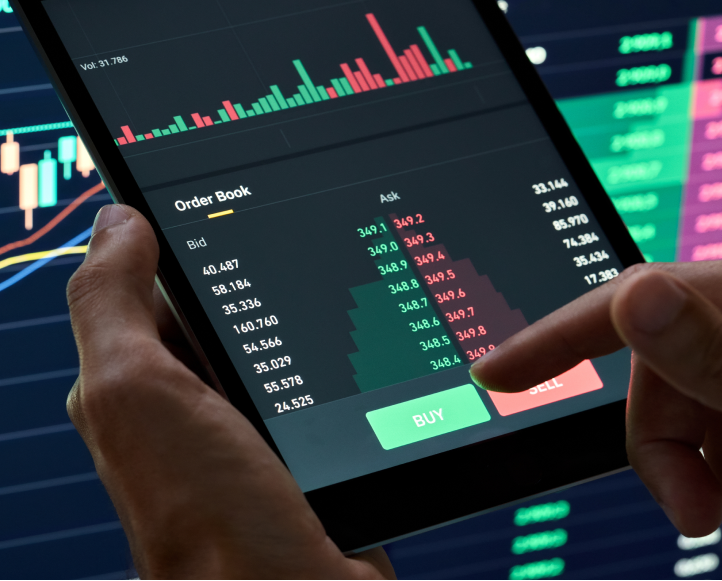Mastering Trading Crypto Charts Techniques and Tools

Mastering Trading Crypto Charts
Understanding how to analyze Trading Crypto Charts visit website trading crypto charts is vital for anyone looking to succeed in the volatile world of cryptocurrency. This comprehensive guide will provide you with the knowledge and tools necessary to read, interpret, and leverage crypto charts to your advantage.
What are Trading Crypto Charts?
Trading crypto charts are graphical representations of cryptocurrency price movements over time. They display information such as prices, volumes, market trends, and time frames. By analyzing these charts, traders can make informed decisions about when to buy or sell cryptocurrencies. There are several types of charts traders frequently use, including line charts, bar charts, and candlestick charts.
Types of Crypto Charts
Line Charts
A line chart is the simplest form of chart, representing price movements with a single line connecting prices at regular intervals. This type of chart is best for giving a quick overview of an asset’s price history but lacks detailed information on price fluctuations and trading volume.
Bar Charts
A bar chart offers more information than a line chart. Each bar represents a specific time frame, indicating the opening, closing, high, and low prices of the asset during that period. Bar charts are useful for identifying trends and possible reversals but can be difficult for beginners to interpret fully.
Candlestick Charts
Candlestick charts are among the most popular tools for crypto trading. Each ‘candlestick’ represents a specific time frame and provides comprehensive information about the price movement. The body of the candlestick represents the opening and closing prices, while the wicks demonstrate the highest and lowest prices during that period. Candlestick patterns can reveal essential insights about market sentiment and can help traders in decision-making.
Understanding Volume in Crypto Trading
Volume refers to the total amount of a specific cryptocurrency that was traded during a certain period. Analyzing volume alongside price movements can provide insights into the strength of a price trend. High volumes during a price increase suggest robust buying interest, while high volumes during a price drop may indicate strong selling pressure. Monitoring volume can help traders spot potential reversals or confirm continuing trends.
Technical Analysis Tools and Indicators
Trading crypto charts become more powerful when combined with technical analysis tools and indicators. Here are some essential tools that traders commonly use:
Moving Averages
Moving averages (MA) are used to smooth out price data and identify trends by filtering out the ‘noise’ from random price fluctuations. The two most common types of moving averages are the Simple Moving Average (SMA) and the Exponential Moving Average (EMA). Using moving averages can help traders identify support and resistance levels and potential buy or sell signals.
Relative Strength Index (RSI)
The Relative Strength Index (RSI) is a momentum oscillator that measures the speed and change of price movements. The RSI ranges from 0 to 100, with values above 70 indicating that an asset may be overbought, and values below 30 indicating that it may be oversold. The RSI can help traders identify potential reversal points in the market.

Bollinger Bands
Bollinger Bands consist of a middle line (SMA) and two outer bands that represent standard deviations away from the SMA. The distance between the bands can indicate market volatility. When the bands widen, it suggests high volatility and potential for price movement, while narrow bands indicate low volatility.
Chart Patterns
Traders often look for specific chart patterns to predict future price movements. Some well-known patterns include:
Head and Shoulders
The Head and Shoulders pattern signals a reversal in trend. It consists of three peaks: a higher peak (head) between two lower peaks (shoulders). The inverse head and shoulders pattern signals a potential upward reversal and is similar in shape.
Double Top and Double Bottom
The Double Top pattern indicates a bearish reversal, occurring after an upward trend, while the Double Bottom pattern indicates a bullish reversal, occurring after a downward trend. Both patterns consist of two peaks or troughs at similar price levels.
How to Create a Trading Strategy Using Crypto Charts
Developing a successful trading strategy requires a good understanding of trading charts and indicators. Here are some steps to create an effective trading strategy:
Define Your Goals and Risk Tolerance
Before diving into trading, it’s essential to define your investment goals. Ask yourself questions like: Are you looking for short-term gains, or do you plan to hold long-term? Also, assess your risk tolerance to determine how much of your capital you are willing to risk on each trade.
Analyze the Market with Charts
Use the various types of charts and indicators discussed earlier to analyze market trends and potential trading opportunities. Look for signals that align with your trading goals, such as breakouts, reversals, or continuation patterns.
Backtest Your Strategy
Before risking real capital, backtest your trading strategy using historical data to determine its effectiveness. This can give you insights into how your strategy would have performed in different market conditions and can help you fine-tune your approach.
Implement Risk Management
A vital component of any trading strategy is proper risk management. Determine your stop-loss and take-profit levels for each trade based on your analysis. This ensures you minimize losses and maximize potential gains.
Conclusion
Trading crypto charts is a powerful tool that can significantly enhance your trading strategies. By understanding the different types of charts, incorporating technical analysis tools, and creating a robust trading plan, you can navigate the complexities of the cryptocurrency market more confidently. Remember, practice and continuous learning are key to becoming a successful trader.
